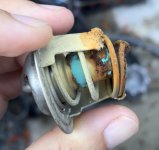- Apr 12, 2022
- 51
- Pool Size
- 10000
- Surface
- Plaster
- Chlorine
- Salt Water Generator
- SWG Type
- Jandy Truclear / Ei
Hello everyone.
Have had a Jandy JXi 400NG with versaflo installed for about a year. Recently had very loud banging/knocking occurring when the gas heater ignited. My PB has come by to service the heater and said that 1) the thermoregulator had failed and 2) there was a large amount of scale present on the manifold backing plate.
I use the PoolMath app to keep my water chemistry in line along with a tfp test kit and digital pH meter. My TA is around 110 and my pH rises to about 8.0-8.2 by the weekend when I service the pool. I usually add enough acid to drop the pH back down to 7.3-7.4. Over the last month, I've been testing every other week due to travel but each time the pH is no higher than 8.2.
What could cause the large amount of scaling on my pool heater? Is it really the pH that could cause the issue? My CSI has always been in the acceptable range. Could the failed regulator have caused a rise in temperature/CSI or did the scaling lead to the failed regulator?
Most of the scale appears to have been surface level and the PB has cleared away what was reachable and is replacing the thermoregulator.
I am hoping to understand what led to this so that I can prevent the issue going forward. My usual pool routine is every weekend except for the past 4 weeks. Should I be monitoring pH 2x week?
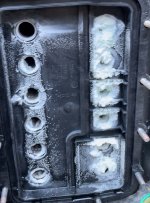
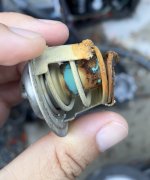
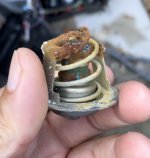
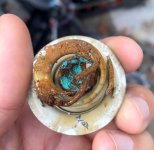
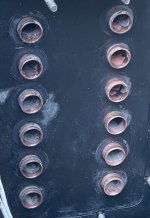
After picking away scale.
Have had a Jandy JXi 400NG with versaflo installed for about a year. Recently had very loud banging/knocking occurring when the gas heater ignited. My PB has come by to service the heater and said that 1) the thermoregulator had failed and 2) there was a large amount of scale present on the manifold backing plate.
I use the PoolMath app to keep my water chemistry in line along with a tfp test kit and digital pH meter. My TA is around 110 and my pH rises to about 8.0-8.2 by the weekend when I service the pool. I usually add enough acid to drop the pH back down to 7.3-7.4. Over the last month, I've been testing every other week due to travel but each time the pH is no higher than 8.2.
What could cause the large amount of scaling on my pool heater? Is it really the pH that could cause the issue? My CSI has always been in the acceptable range. Could the failed regulator have caused a rise in temperature/CSI or did the scaling lead to the failed regulator?
Most of the scale appears to have been surface level and the PB has cleared away what was reachable and is replacing the thermoregulator.
I am hoping to understand what led to this so that I can prevent the issue going forward. My usual pool routine is every weekend except for the past 4 weeks. Should I be monitoring pH 2x week?





After picking away scale.


